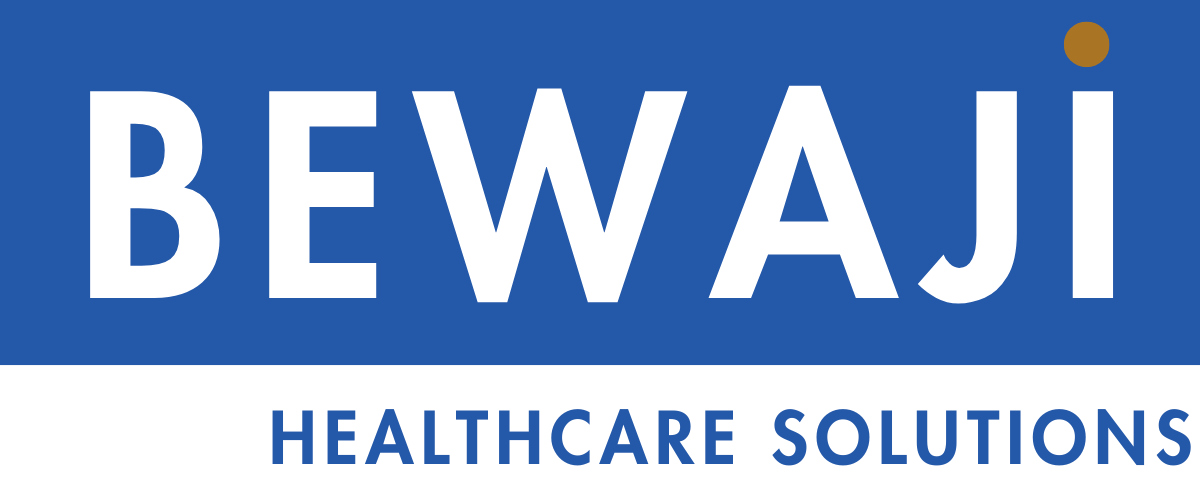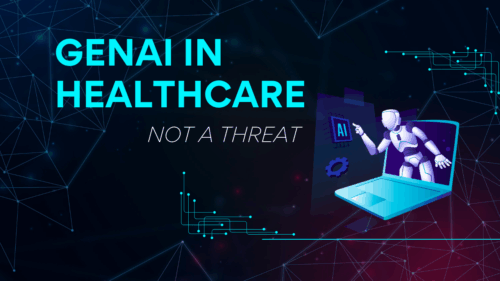In August 2022, Novant Health notified 1.3 million patients about a significant data privacy breach involving Meta pixel code on their website. This breach potentially led to unauthorized disclosures of protected health information (PHI), highlighting critical vulnerabilities in using third-party tracking technologies in healthcare.
The Meta pixel, a small piece of code used to track and measure website interactions, was intended to enhance the success of Novant Health’s promotional campaigns. However, it inadvertently transmitted sensitive information such as contact details, appointment information, and IP addresses to Meta, raising significant privacy concerns.
The scale of the Novant Health incident, which involved a significant data privacy breach and potentially led to unauthorized disclosures of protected health information (PHI), underscores the urgent need for robust privacy measures. The incident compromised patient trust and exposed Novant Health to significant legal and financial repercussions. As a result, Novant Health agreed to a $6.6 million settlement to resolve a class action lawsuit, emphasizing the importance of stringent privacy controls in digital transformation efforts.
To effectively navigate the complexities of digital transformation, it is crucial to embed comprehensive privacy frameworks that align third-party tracking technologies with current and future privacy standards. This ensures robust data protection, compliance, and trust across healthcare systems and digital platforms.
Strategic Integration of Data Privacy in Digital Transformation
Integrating data privacy into digital transformation strategies is indispensable for healthcare organizations that aim to safeguard sensitive information while embracing technological advancements. A strategic approach involves:
- Establishing comprehensive privacy frameworks.
- Enhancing digital governance.
- Leveraging advanced analytics to anticipate and mitigate privacy risks.
Holistic Privacy Frameworks
A holistic privacy framework that encompasses all aspects of privacy management is essential for navigating the complexities of digital transformation in healthcare. Such a framework must not only comply with current regulations but also anticipate and incorporate future privacy standards. This proactive stance ensures that privacy is an integral component of all digital initiatives rather than an afterthought.
The Novant Health incident involving the Meta pixel code is a stark reminder of the consequences of inadequate privacy frameworks.
To prevent similar incidents, healthcare organizations must develop privacy frameworks that address the full spectrum of data handling processes, from collection to disposal. This includes implementing strict data minimization practices, which refer to collecting only the necessary data for a specific purpose, ensuring that only essential data is collected, and embedding privacy controls directly into system architectures.
Enhanced Role of Digital Governance
A robust digital governance structure is crucial for overseeing compliance and managing risks associated with third-party tracking technologies. Centralized governance can streamline the management of privacy policies, ensure consistent application of security measures, and provide a clear framework for responding to potential breaches.
More recently, a Kaiser Permanente data breach, which affected 13.4 million members, highlights the importance of effective digital governance. The breach was linked to online technologies that inadequately managed personal information, leading to unauthorized data transmissions to vendors like Google and Microsoft Bing. This incident illustrates the need for centralized governance structures to enforce privacy policies, conduct regular audits, and swiftly address compliance issues.
Proactive Data Protection Strategies
Adopting a proactive approach to data protection, encouraged by website privacy scanners, is essential in mitigating privacy risks. This involves early identification and resolution of potential issues, such as misconfigurations or unauthorized data transmissions, to help healthcare organizations minimize the impact of breaches and maintain patient trust. This aligns with the increasing data security and privacy demands in the digital age.
The Role of Website Scanners
Website trackers, integral to many online activities, pose significant privacy concerns, especially in healthcare settings. Often unnoticed by users, these trackers monitor behavior across websites and apps, potentially collecting sensitive patient data without consent. This data includes personal identifiers like names, emails, and medical details, which can be transmitted without the user’s awareness, raising substantial privacy issues.
Healthcare websites frequently use third-party tracking technologies, such as cookies, which advertising giants like Meta and Alphabet (Google) commonly deploy. These trackers gather data on user actions, including clicks and form submissions, to build detailed user profiles, risking patient privacy and security. Alarmingly, studies show nearly all U.S. hospital websites employ at least one third-party tracker, with Meta being particularly prevalent, leading to numerous data breaches and privacy incidents.
Website privacy scanners are crucial tools for protecting patient privacy in healthcare. They detect and alert organizations to potential privacy threats on their websites by:
- Providing Visibility into Third-Party Tracking: Scanners reveal the network of third-party trackers, detailing ownership, location, and data collection practices, helping healthcare organizations understand and manage tracking on their sites.
- Risk Scoring and Monitoring: By offering risk scores for webpages, these scanners enable healthcare organizations to promptly identify and address new risks or changes, enhancing proactive privacy management.
Real-Time Protection: Scanners offer real-time defenses against unauthorized sharing of protected health information (PHI) and personally identifiable information (PII). This means that as soon as a potential privacy threat is detected, the scanner takes immediate action to prevent the unauthorized transmission of data, ensuring continuous protection of patient data. Using website privacy scanners helps healthcare organizations comply with data protection and privacy regulations, which is crucial for maintaining patient privacy and avoiding legal issues. These tools also enhance transparency and patient control by providing detailed information on data collection and sharing practices, empowering patients to make informed decisions about their online interactions with healthcare providers.
The perceived high cost and resource intensity is a common counterargument against implementing comprehensive privacy frameworks. Critics argue that developing and maintaining such frameworks require significant financial and human resources, which could strain an organization’s budget.
Despite the perceived high cost and resource intensity, the long-term benefits of robust privacy frameworks are undeniable. They ensure compliance with privacy standards, reduce the risk of costly data breaches and legal settlements, and enhance patient trust and confidence. This is invaluable for healthcare organizations in maintaining a competitive edge in the industry, making the initial investment in comprehensive privacy frameworks a strategic and prudent choice.
Investing in comprehensive privacy frameworks ultimately leads to greater efficiency and security, reducing the likelihood of breaches and the associated costs of remediation and reputational damage.
Embedding Privacy in Digital Initiatives
Integrating privacy into digital initiatives is a foundational strategy for healthcare organizations seeking to protect patient data while embracing technological advancements. This approach involves embedding privacy features into IT systems and business practices, implementing robust vendor management practices, and enforcing strict data minimization to mitigate risks associated with data breaches.
Privacy by Design and Default
Privacy by Design and Default is a powerful tool that empowers healthcare organizations to integrate privacy features directly into the architecture of their IT systems and business processes. By doing so, they can ensure that privacy considerations are not an afterthought but a fundamental part of every system development and operation stage, thereby significantly reducing the risk of privacy breaches.
The breaches at Novant Health and Kaiser Permanente underscore the importance of this approach. At Novant Health, the misconfiguration of Meta pixel code led to the unauthorized transmission of sensitive patient information. Similarly, Kaiser Permanente’s data breach was linked to online technologies that inadequately managed personal data, resulting in unauthorized transmissions to third-party vendors.
To prevent such breaches, healthcare organizations must adopt Privacy by Design principles, ensuring that every digital initiative supports data privacy. This involves incorporating data encryption, access controls, and automatic data anonymization into system designs. Regular privacy impact assessments should also be conducted to identify and mitigate potential risks throughout the system’s lifecycle.
Robust Vendor Management Practices
Effective vendor management is critical for maintaining data privacy and security when integrating third-party technologies into healthcare systems. This requires stringent vendor assessments, regular audits, and thorough vetting of third-party tools to ensure they comply with privacy standards.
The data breaches at both Novant Health and Kaiser Permanente highlight the need for robust vendor management. These incidents demonstrate the risks associated with inadequate vendor oversight and the importance of thoroughly vetting and configuring third-party technologies.
To enhance vendor management practices, healthcare organizations should:
- Conduct comprehensive risk assessments of all third-party vendors.
- Implement contractual agreements that include stringent data protection clauses.
- Perform regular audits and monitoring of vendor compliance with privacy policies.
- Require vendors to adhere to industry standards and best practices for data security.
Strict Data Minimization
Data minimization is crucial in reducing the risks associated with data breaches. This involves collecting and retaining only the minimum amount of data necessary for specific purposes, thereby limiting the potential impact of unauthorized access or data leakage.
Kaiser Permanente’s approach to limiting data collection highlights the benefits of strict data minimization practices. By collecting only essential data and avoiding the retention of unnecessary information, Kaiser Permanente mitigated the consequences of its data breach, minimizing the amount of sensitive information exposed.
To enforce strict data minimization, healthcare organizations should:
- Implement policies that define the minimum data requirements for various processes and systems.
- Regularly review and update data collection practices to ensure compliance with data minimization principles.
- Use anonymization and pseudonymization techniques to protect personal data while retaining its utility for analysis and decision-making.
These practices enhance data security and ensure compliance with privacy regulations, reducing the risk of legal and financial repercussions from data breaches.
A common reluctance towards Privacy by Design is that it may slow innovation by adding complexity and constraints to system development. Critics argue that the need to embed privacy features from the outset can delay the deployment of new technologies and increase development costs.
However, integrating privacy into digital initiatives enhances trust and supports sustainable innovation in the long term. By prioritizing privacy, healthcare organizations can build systems resilient to privacy challenges and capable of adapting to evolving regulatory requirements. This proactive approach fosters a culture of trust among patients and stakeholders, which is essential for successfully adopting and accepting new technologies.
Furthermore, the upfront investment in Privacy by Design can lead to cost savings by reducing the likelihood of costly data breaches and compliance issues. It also ensures that healthcare organizations are better prepared to handle future privacy challenges, enabling them to innovate confidently. This is my favorite reason. The freedom to innovate, knowing you’re backed by secure data protection and privacy systems, is a great feeling.
Alignment with Evolving Standards
Embedding privacy ensures that healthcare organizations align with current and future privacy standards. As privacy regulations evolve, having a solid foundation of privacy-integrated systems and practices enables organizations to adapt to new requirements and maintain compliance quickly.
By focusing on privacy from the outset, healthcare organizations can create a robust framework that supports continuous innovation while safeguarding patient data. This approach enhances data protection and strengthens the integrity and trustworthiness of healthcare digital platforms, positioning organizations to thrive in an increasingly digital and privacy-conscious environment.
Leveraging AI and Advanced Technologies for Privacy and Security
Granular Access Controls and Auditing
Granular access controls and auditing are essential for managing who can access patient data and how that access is monitored. AI is crucial in refining these controls by providing sophisticated access management and auditing tools. AI systems can create detailed audit logs, track every data access and modification, and enhance transparency and accountability.
For example, implementing AI-driven access controls allows healthcare organizations to define precise access levels based on roles and responsibilities, ensuring that only authorized personnel can access specific data sets. Comprehensive audit logs generated by AI systems can track all interactions with patient data, providing a clear record that can be reviewed to ensure compliance with privacy policies and detect any unauthorized access.
Advanced Encryption and Anonymization Techniques
Advanced encryption and anonymization techniques are critical for protecting patient data while allowing for its use in aggregate analysis. Differential privacy and homomorphic encryption are two cutting-edge technologies that offer robust solutions for maintaining data privacy.
Differential privacy adds controlled noise to data, ensuring that individual patient information cannot be inferred from aggregate data sets. This technique allows healthcare organizations to analyze large volumes of data while preserving the privacy of individual patients. Homomorphic encryption, conversely, enables computations to be performed on encrypted data without decrypting it first, ensuring that sensitive information remains secure throughout the processing.
For instance, by implementing differential privacy, healthcare providers can generate valuable insights from patient data without compromising individual privacy. Similarly, homomorphic encryption allows for secure data processing in cloud environments, where data can be analyzed without exposing it to potential breaches.
These advanced techniques ensure that healthcare organizations can leverage patient data for research and analysis while maintaining stringent privacy protections, thereby balancing the need for data utility with the imperative of data security.
Real-Time Threat Detection
Real-time threat detection is a proactive approach to identifying and mitigating potential data breaches. AI-driven behavioral analytics and anomaly detection are potent tools for monitoring data flows and detecting suspicious activities in real-time.
Behavioral analytics involves analyzing data access and usage patterns to identify behaviors that deviate from the norm, which may indicate a potential threat. AI systems can continuously monitor these patterns, detecting anomalies that could signify unauthorized access or data exfiltration. Once detected, these systems can trigger alerts and initiate automated responses to mitigate the threat.
For example, suppose an AI system detects an unusual pattern of data access, such as a sudden spike in data downloads by a single user. In that case, it can immediately flag this behavior for further investigation. This proactive approach allows healthcare organizations to respond swiftly to potential breaches, minimizing the impact on patient data and reducing the risk of widespread data exposure.
By utilizing AI for real-time threat detection, healthcare organizations can enhance their security posture, identifying and addressing potential threats before they cause significant harm.
AI-driven access controls, encryption techniques, and real-time threat detection can be costly and complex. However, the benefits far outweigh the challenges. Data breaches’ financial penalties and reputational damage costs are significantly higher than the investment required for these advanced security measures.
Preemptive security measures provided by AI and advanced technologies offer a high return on investment by preventing breaches before they occur, thereby saving healthcare organizations from the substantial costs associated with data breaches. Additionally, the implementation complexity is mitigated by the long-term benefits of enhanced security, compliance, and trust.
Navigating the complexities of digital transformation in healthcare requires a steadfast commitment to embedding comprehensive privacy frameworks. This approach ensures that third-party tracking technologies align with current and future privacy standards, thus guaranteeing robust data protection, compliance, and trust across healthcare systems and digital platforms.
Throughout this article, we have explored the critical components of a robust privacy strategy, emphasizing the integration of privacy by design, stringent vendor management, and the adoption of advanced technologies. These elements fortify healthcare systems against data breaches and enhance digital health initiatives’ security and trustworthiness.
To effectively navigate the complexities of digital transformation, it is crucial to embed comprehensive privacy frameworks that align third-party tracking technologies with current and future privacy standards. This ensures robust data protection, compliance, and trust across healthcare systems and digital platforms.
Healthcare organizations must adopt and integrate comprehensive privacy frameworks into their digital transformation strategies. This proactive stance involves implementing privacy measures from the outset and maintaining ongoing vigilance and adaptability to new privacy challenges.
Adopt Comprehensive Privacy Frameworks
Organizations should prioritize developing and implementing privacy frameworks encompassing all aspects of data handling, from collection to disposal. This includes embedding privacy features directly into IT systems and business practices, conducting regular privacy impact assessments, and ensuring compliance with existing and anticipated privacy regulations.
Enhance Vendor Management Practices
Effective vendor management is essential for maintaining data privacy and security. Healthcare organizations must conduct thorough risk assessments of all third-party vendors, enforce stringent data protection clauses in contractual agreements, and perform regular audits to ensure compliance with privacy standards. Utilizing technologies for tracker scanning can further enhance the security of third-party tools.
Leverage Advanced Technologies for Privacy and Security
Investing in advanced technologies such as AI-driven access controls, differential privacy, homomorphic encryption, and real-time threat detection is crucial for enhancing privacy and security. These technologies provide robust solutions for managing access, protecting data, and detecting threats, ensuring comprehensive data protection.
Maintain Ongoing Vigilance and Adaptation
Digital healthcare is continuously evolving, and so are the associated privacy challenges. Healthcare organizations must remain vigilant and adaptable, continuously updating their privacy frameworks to address new threats and regulatory changes. This ongoing commitment to privacy will protect patient data and foster a culture of trust and innovation.
Final Thoughts
Healthcare organizations can build a secure and trustworthy digital health ecosystem by embracing these strategies. The integration of comprehensive privacy frameworks, coupled with the proactive use of advanced technologies, will position healthcare providers to navigate the complexities of digital transformation effectively. This approach ensures robust data protection and compliance. It strengthens the trust and confidence of patients and stakeholders, ultimately enhancing the quality and reliability of digital healthcare services.
In conclusion, the commitment to embedding privacy in digital initiatives is both a technological and strategic necessity. Healthcare organizations must act now to integrate these frameworks and technologies, ensuring a secure, compliant, and trustworthy future for digital health.




